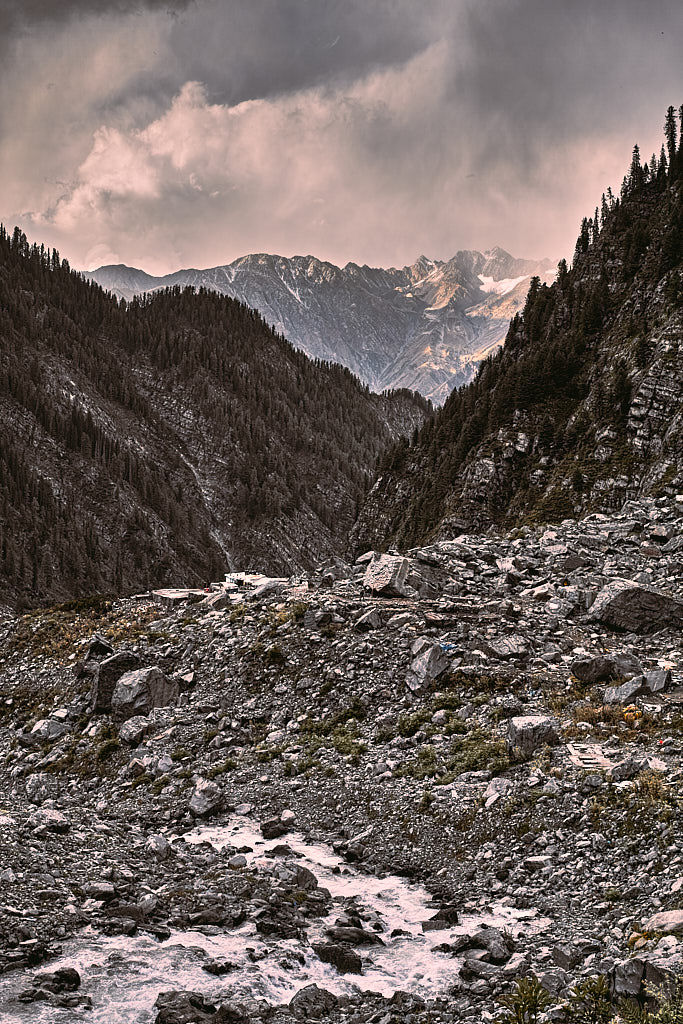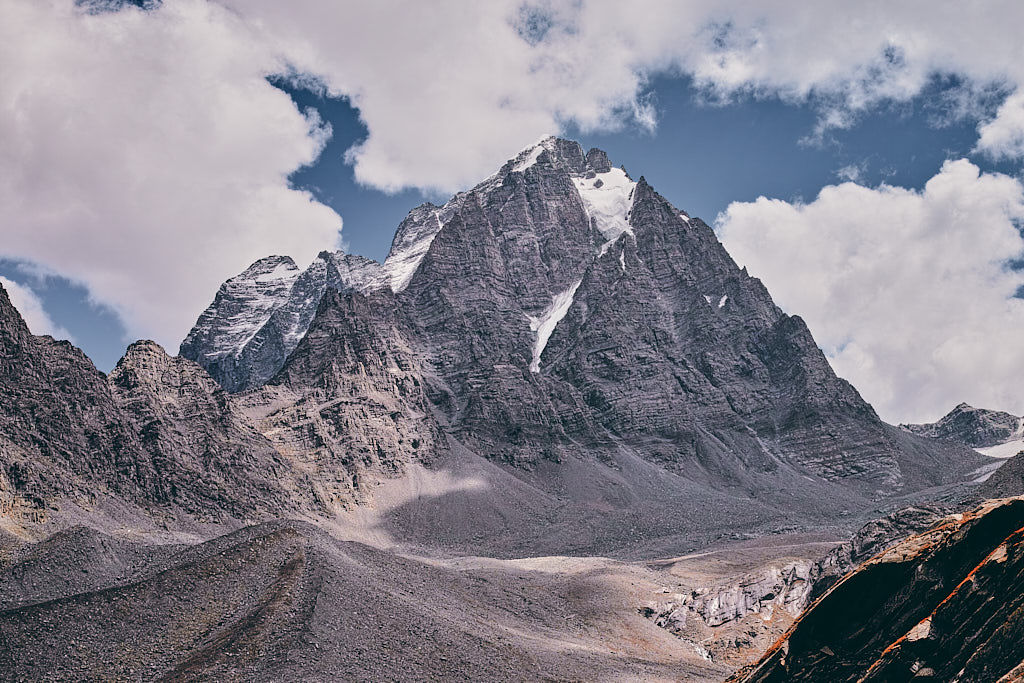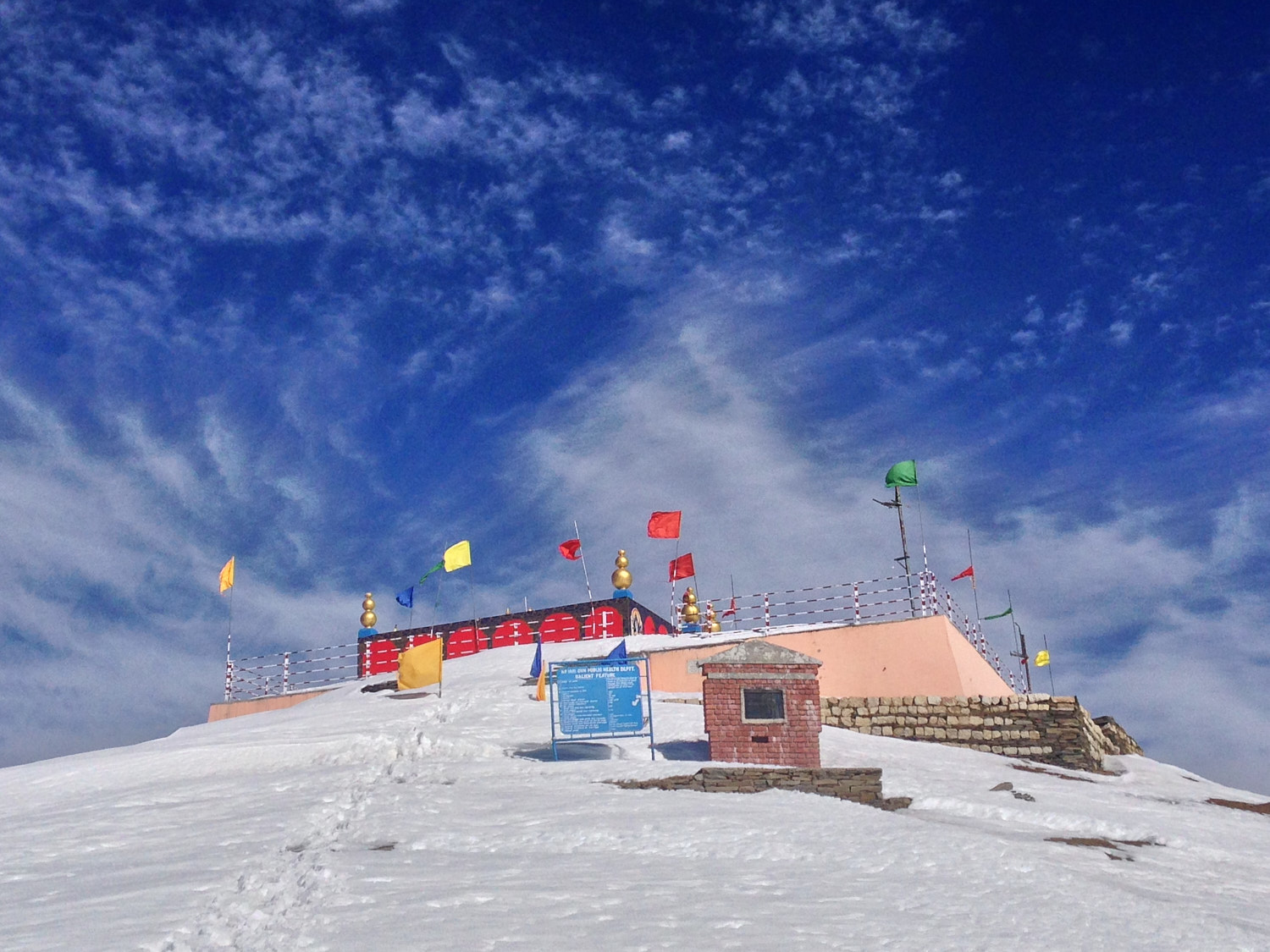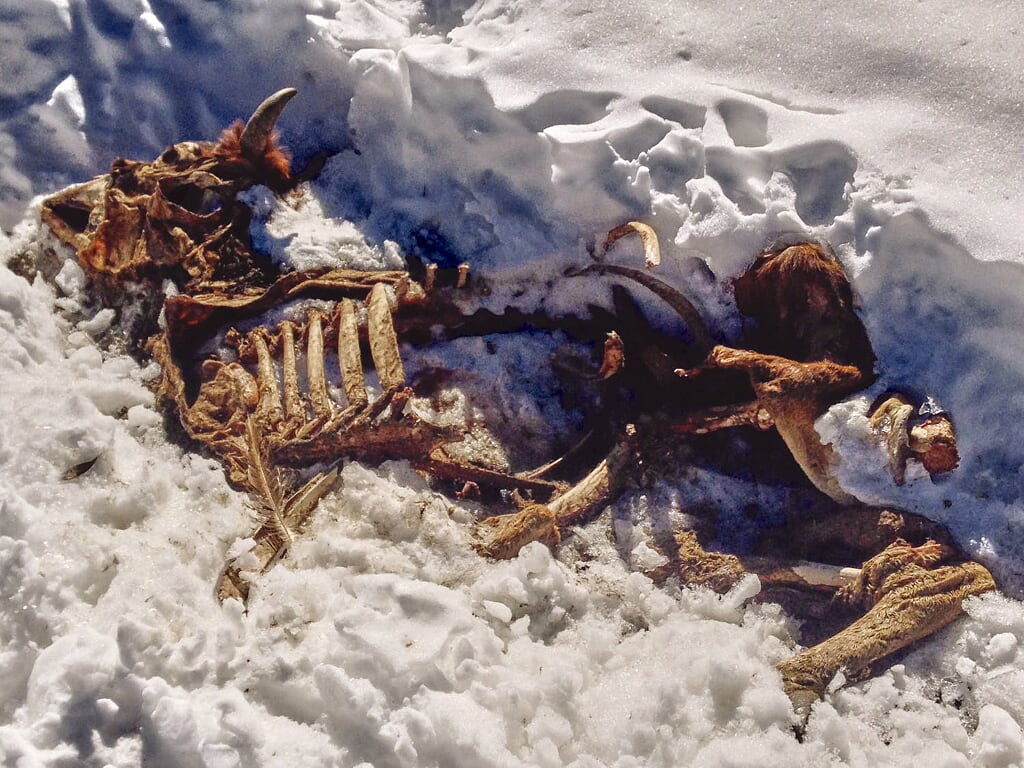Hadsar to Mani Mahesh trek diary

Organised pilgrimage and cleanliness are hardly synonymous and this is evident on the Hadsar – Dhanchoo – Mani Mahesh trail. Plastic, human excrement and other odds and ends clog the Mani Mahesh trail and stream.
What happens when you put a few lakh people for a month near a pristine mountain lake… A clusterfuck of immense proportions.
The Himachal government deems this pilgrimage to be important enough to merit a state sponsorship. Yet, their commitment is only to ensure that a record number of pilgrims reach the lake. Creating an infrastructure that supports and manages this ‘mob’ of pilgrims is unheard of. The only support structure that I saw along the trail were pit latrines. Yet in all their wisdom, these toilets have been dug right next to the only potable water source i.e. the Mani Mahesh stream.
Contamination of local water sources by human faeces can lead to transmission of Giardiasis, a human bacterial parasite.
There are no dustbins or a garbage collection and disposal system along the trail or even between Hadsar and Bharmour. It is sad that the ‘holy’ Mani Mahesh Ganga is the most polluted mountain stream its been my displeasure to see.
The question then is, despite this immense waste, is the Mani Mahesh trail still worth trekking? The answer may seem counter-intuitive but it is still a resounding “yes”. Despite our valiant attempts to screw it up, Mani Mahesh Lake and Chamba Kailash are and remain a hauntingly beautiful place.
 |
|---|
| Hadsar to Mani Mahesh is not without its pretty moments |
I had an urge to visit Mani Mahesh after [I had glimpsed the peak from Jalsu Pass]({% post_url 2016-10-15-Jalsu-Gothe-To-Laake-Wali-Mata-Jalsu-Pass-Trek %}). Three well-established trails lead to Mani Mahesh. Out of these three, the most accessible trail starts from Hadsar, which is 12 kilometres from Bharmour town.
Bharmour, formally known as Brahmpura, was the ancient capital of Chamba district in Himachal Pradesh, India. As the whole country around Bharmour is supposed to belong to lord Shiva, it is popularly spoken of as Shiva Bhumi, abode of lord Shiva. It lies between the Pir-Panjal and Dhauladhar range, between Ravi and Chenab valley.
From Hadsar, a broad 13.5-kilometre trail leads to Mani Mahesh (Dal) Lake. The trail starts on the true left of Mani Mahesh stream as a gentle ascent. These woods are blessed with some old coniferous trees of immense girth and the view when looking over Kugti ridge is immensely satisfying. The trail is marked with pilgrim exultations and if you choose to visit after September (like I did) it is choked with remnants of the yatra. During the annual pilgrimage in August – September, numerous bhandaras (free food stalls), night-shelters and eateries spring up by this route. I visited this trail a couple of weeks after the yatra and most of the shops along the way had already been closed or were in the process of being shut down. Mule trains were making daily rounds to help dismantle shops and get the leftover supplies back to Hadsar road-head. I was surprised that shopkeepers come from as far as Punjab and Jammu & Kashmir to pitch shops along the Mani Mahesh trail.
The trail emerges from the woods at a log bridge over the Mani Mahesh stream, a kilometre before Dhancho. Dhancho which is 6 km from Hadsar, is the regular night halt for most pilgrims and trekkers. I had not planned for an overnight stop at Dhancho. Nevertheless, it started to rain at the bridge and as I passed Raju’s tea shop in Dhancho, he shouted out ‘भाईजी गरम चाय पी जाओ’ (Brother, do stop for a piping hot cup of tea). His sincere entreaty, coupled with the downpour made me stop at his shop.
 |
|---|
| A cold wet evening at Dhancho |
Dhancho is a meeting place for anyone walking the Mani Mahesh Trail. Raju’s tea shop remains open till the last week of November and sometimes even in December depending on the weather. This along with the tea shop at Mani Mahesh remain in business from May to November. Raju’s tea shop was already home to a 75-year-old gentleman from Tamil Nadu and his guide, a local lad – ‘Shiva’. Plus, there were a couple of young men who hailed from Gurgaon. We formed a diverse group and the next day we would all head for Mani Mahesh. My co-trekkers had decided to make an early morning start. I, on the other hand, decided to start just after sunrise. The next day at 0630 after a warm cup of tea with some biscuits, I started from Dhancho. I caught up with my co-trekkers three-quarters of an hour from Dhancho. They were making slow progress as they were not used to the mountains and were starting to feel the effects of the terrain and a higher altitude.
I left my painkillers and trail snacks with them for sustenance and pushed ahead to Sundrasi. The trail from Dhancho to Sundrasi is steeper than the one from Hadsar to Dhancho. The trail eases out around Sundrasi and then starts to climb again along a glacier moraine all the way to Gaurikund. A pooch trailed me from Sundrasi to Gaurikund. We shared a quiet bread and butter snack sitting on a rock that warned us to be careful of a glacier ahead.
 |
|---|
| Trail Dog approves of my bread and butter snack |
At Sundrasi, I was told that the shop at Gaurikund was open. At Gaurikund I found an open shop but no shopkeeper. Looking around, I spotted a young boy perched on a boulder making a phone call. Turns out that the boy (Vijay) was the helper at the shop. The shop owner due to a death in the family had left him to manage the shop for a couple of days. However, the couple of days had turned into a week and a half and Vijay was unable to reach the owner on the phone. Deprived of human contact, Vijay was anxious to fold down the shop and head back home.
Vijay is the youngest of three brothers and hails from a village close to Khadamukh. He had just completed his 12th standard this year and had followed another boy from his village to Mani Mahesh. A job at Mani mahesh during the yatra season is a lucrative one. The shopkeepers and employees make a good amount of money from tips. As the shop helper, Vijay had quickly learnt to cook and I can vouch that his aloo-parantha and tea were the best I’ve had on this trail.
 |
|---|
| The trail from Sundrasi to Gaurikund is clearly visible |
Gaurikund was a disappointing murky pond rendered even uglier by a concrete perimeter. I lost all hope at this point and made up my mind that this trail was indeed beyond redemption. Yet I couldn’t be more wrong. Turn a corner at Gaurikund and you catch your first glimpse of the Manimahesh Kailash or Chamba Kailash peak. The majestic 5653-metre peak with its serpentine glacier is a sight to behold. I realised that I would gladly walk this distance twice for such a view.
A recent research study carried out by Geological Survey of India reveals that during the last 37 years, the mani Mahesh glacier receded by 1,075 metres (3,527 ft) with an average retreat of 29.05 metres (95.3 ft)/year.
From Gaurikund it is a thirty-minute gentle climb to the Mani Mahesh Lake or ‘Dal’. Mani Mahesh lake is yet another disappointing murky pond of smelly water. Yet I was so enamoured by Mani Mahesh peak that I was willing to forget the mess we have made of this place.
 |
|---|
| Perhaps the mountain did deem me to be worthy. Manimahesh in all its resplendent glory |
After a few hours, I was glad to see that the Gurgaon boys had made it up to the lake. The old gentlemen from Tamil Nadu had unfortunately turned back from Sundrasi. As locals will tell you, you don’t have the privilege of a दर्शन (view) unless Shiva wills it. Perhaps, Shiva had not willed it for the gentleman from Tamil Nadu. I do wish Shiva wills it for him the next time.
Related
- [Trek detail with GPS maps, altitude, recommended gear and more]({% post_url 2017-01-21-Hadsar-to-Mani-Mahesh-Trek %}).




